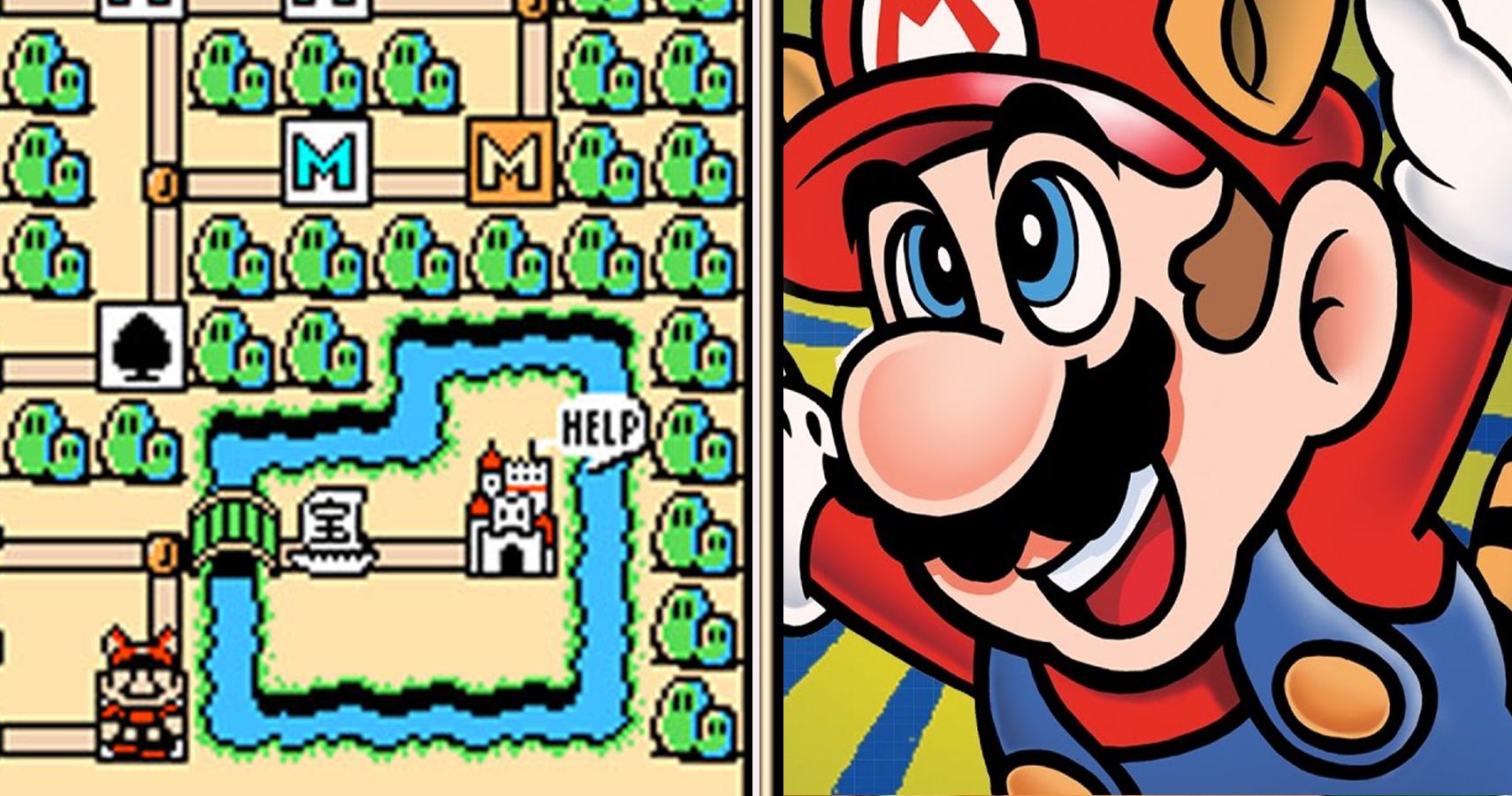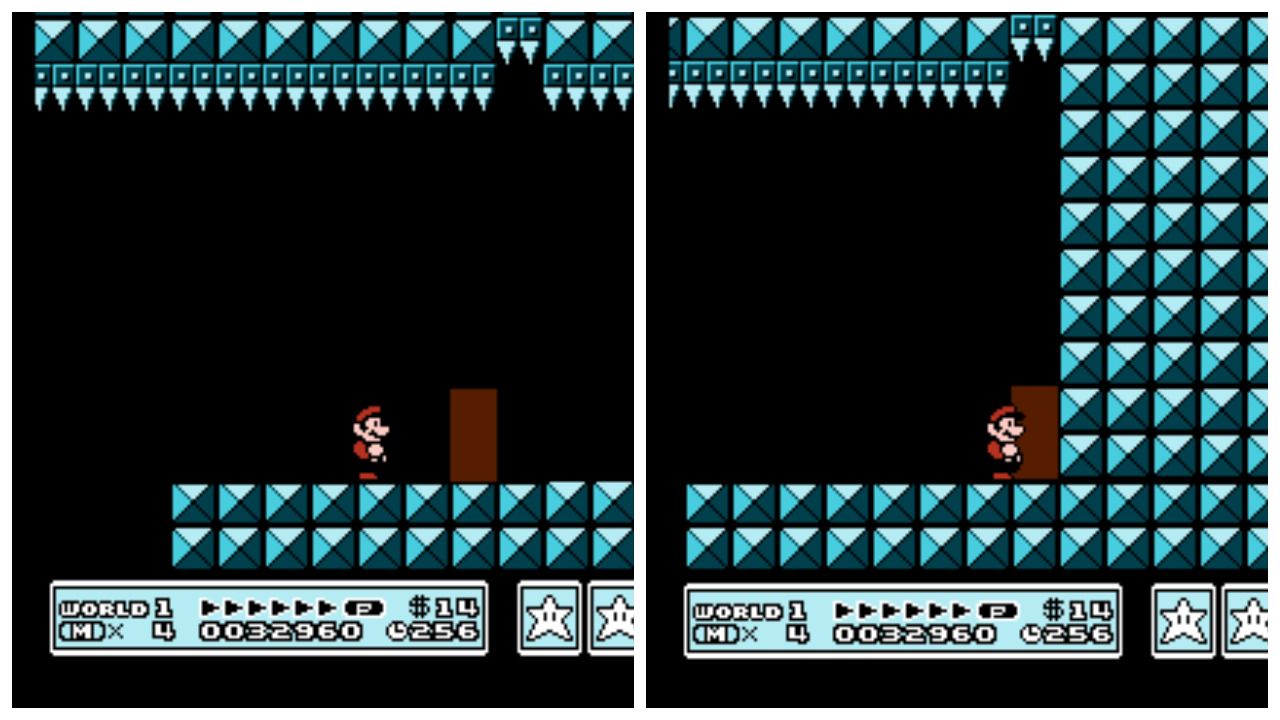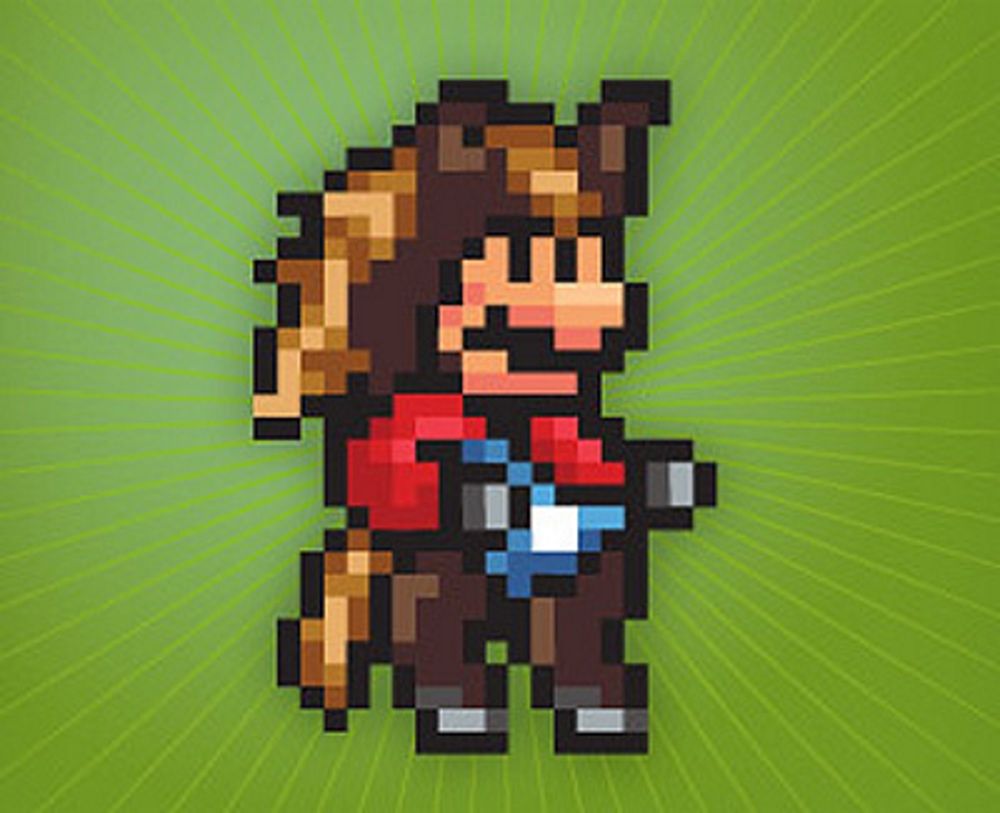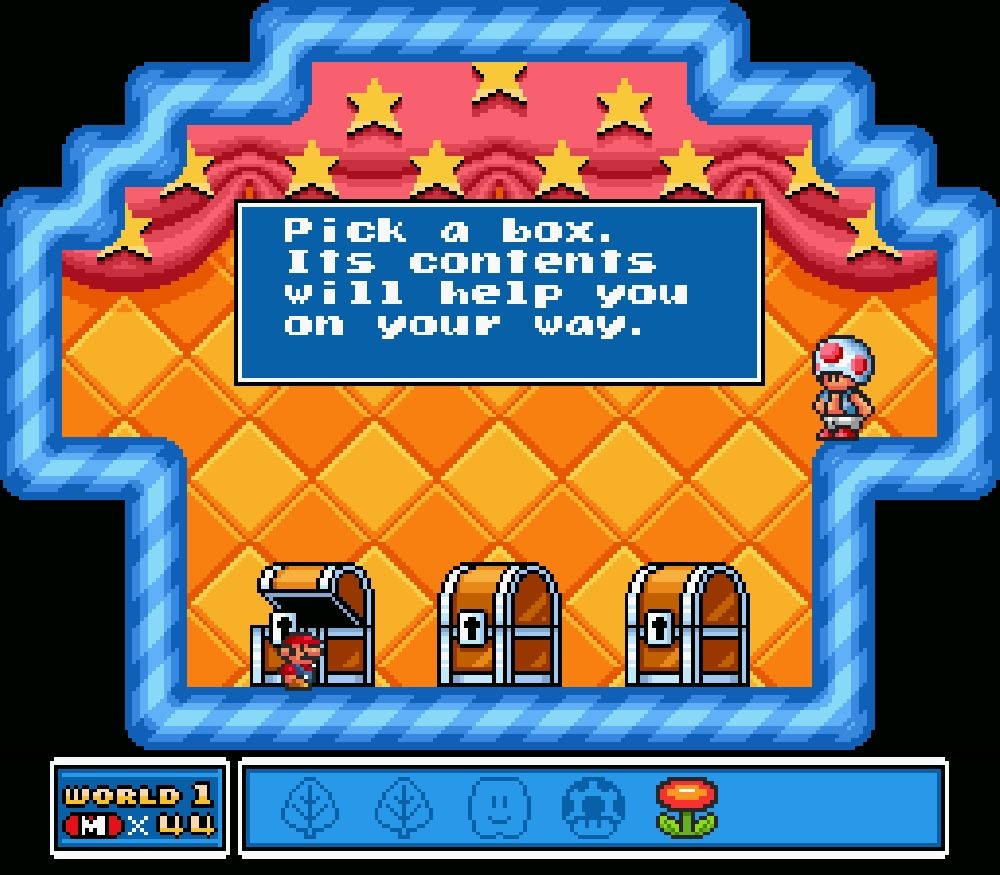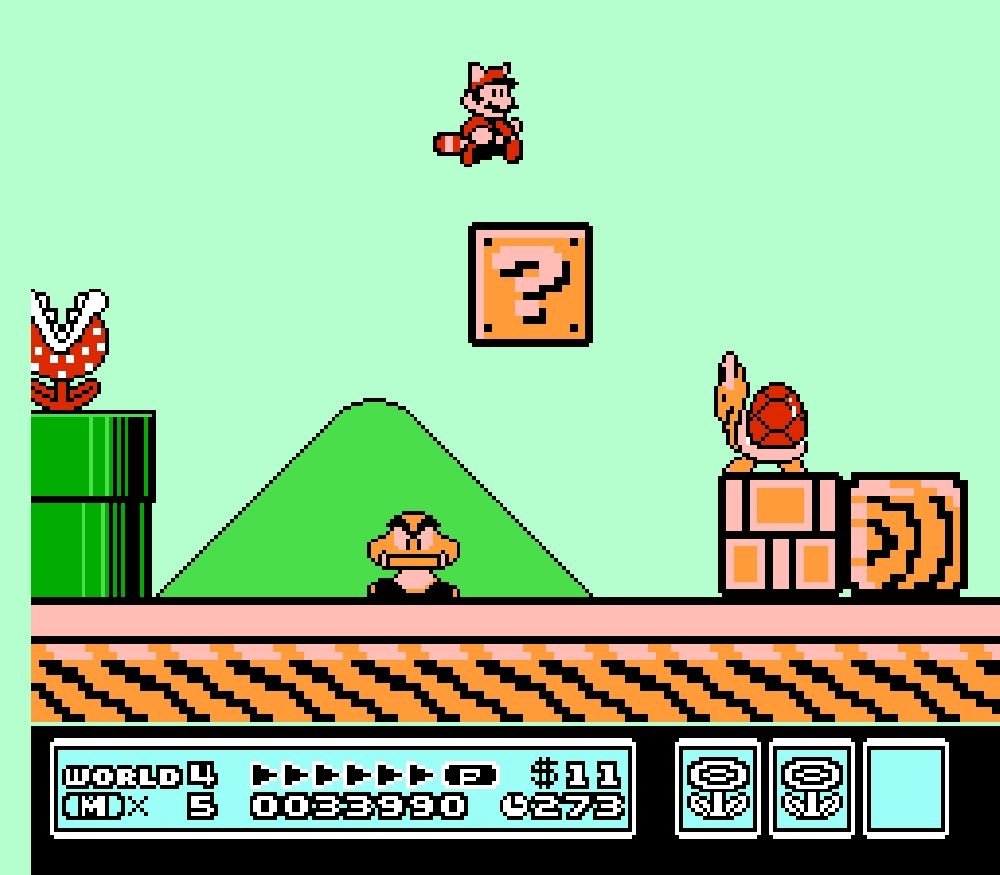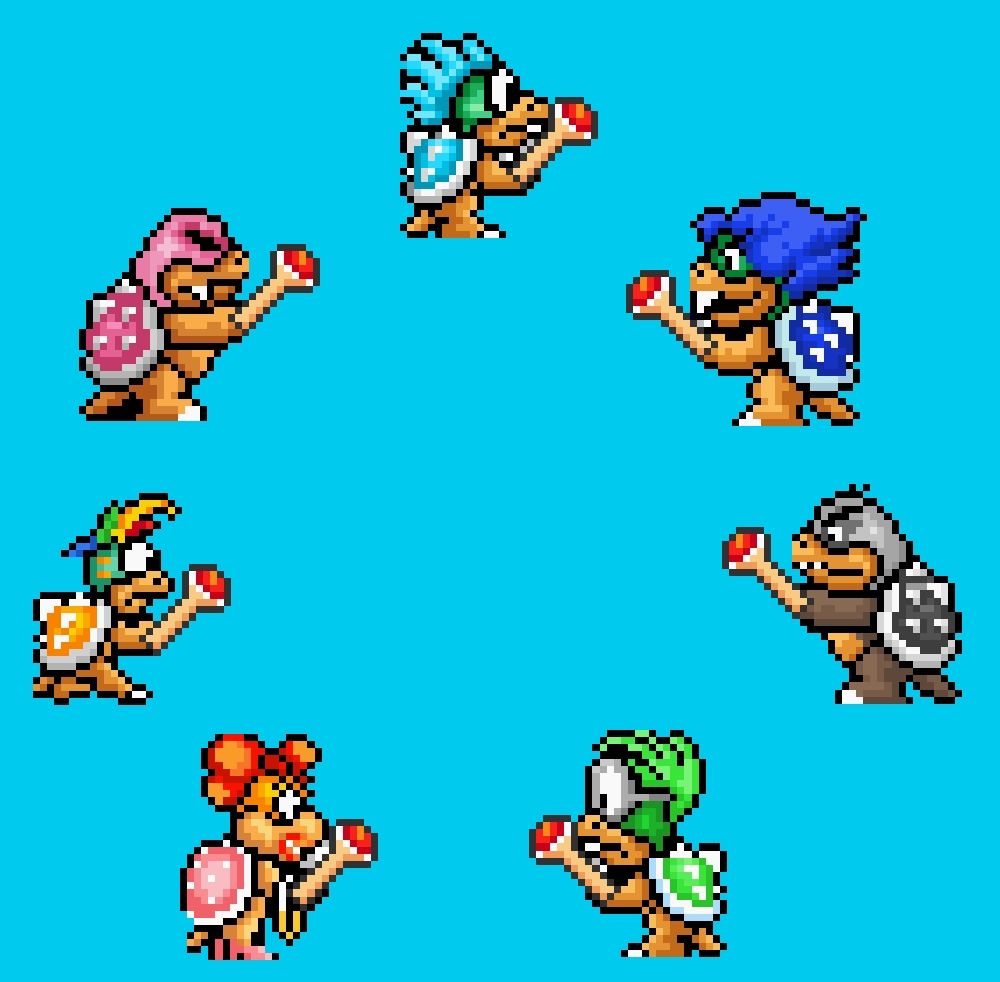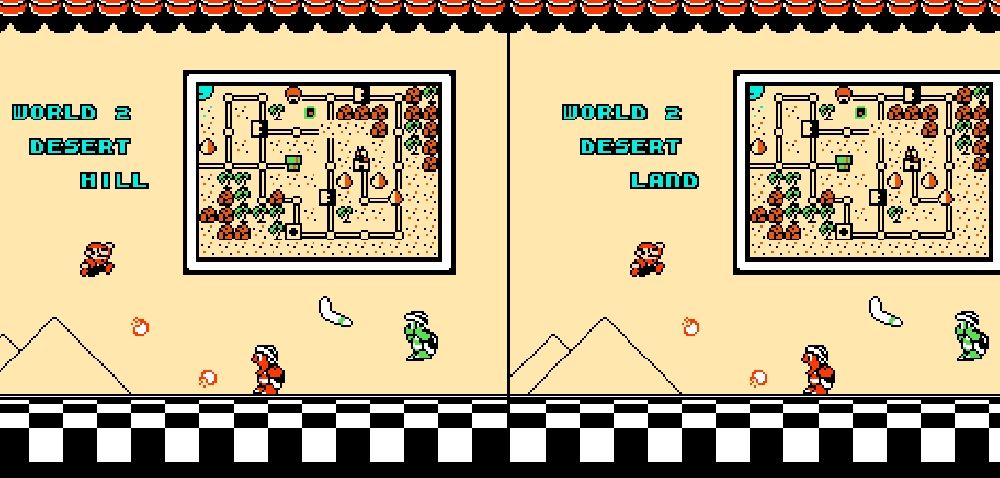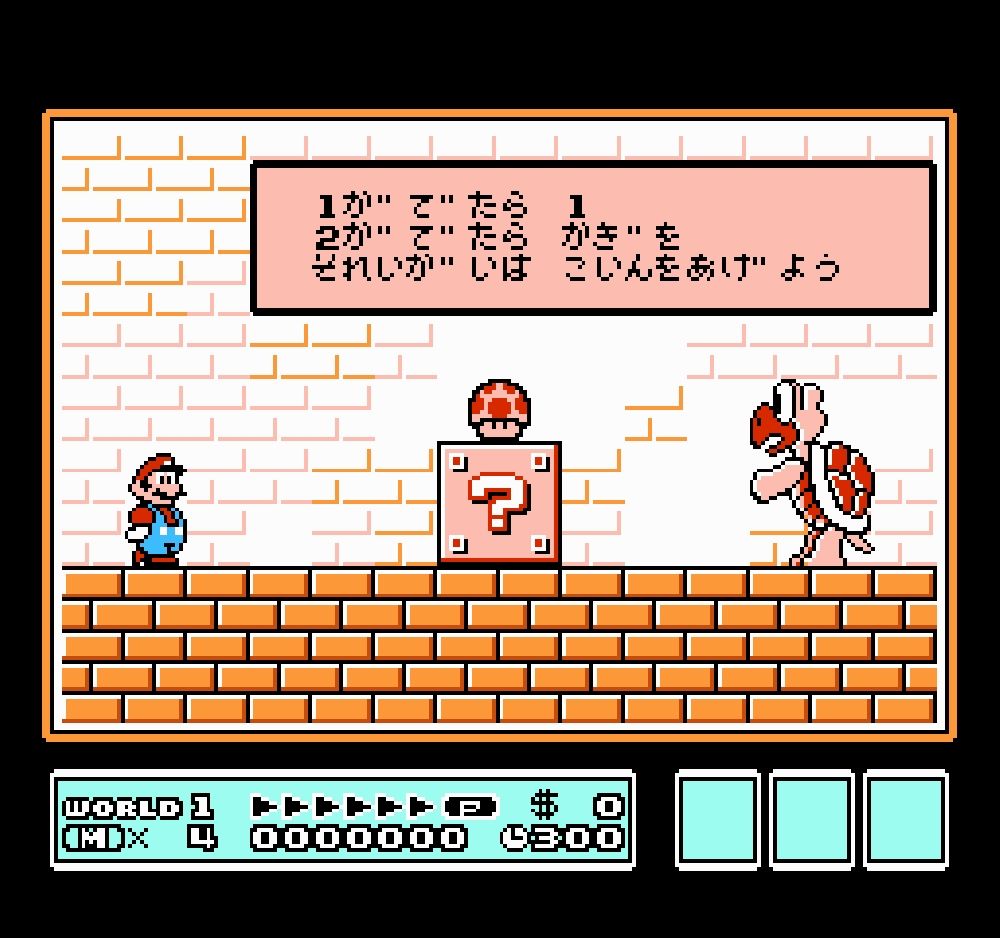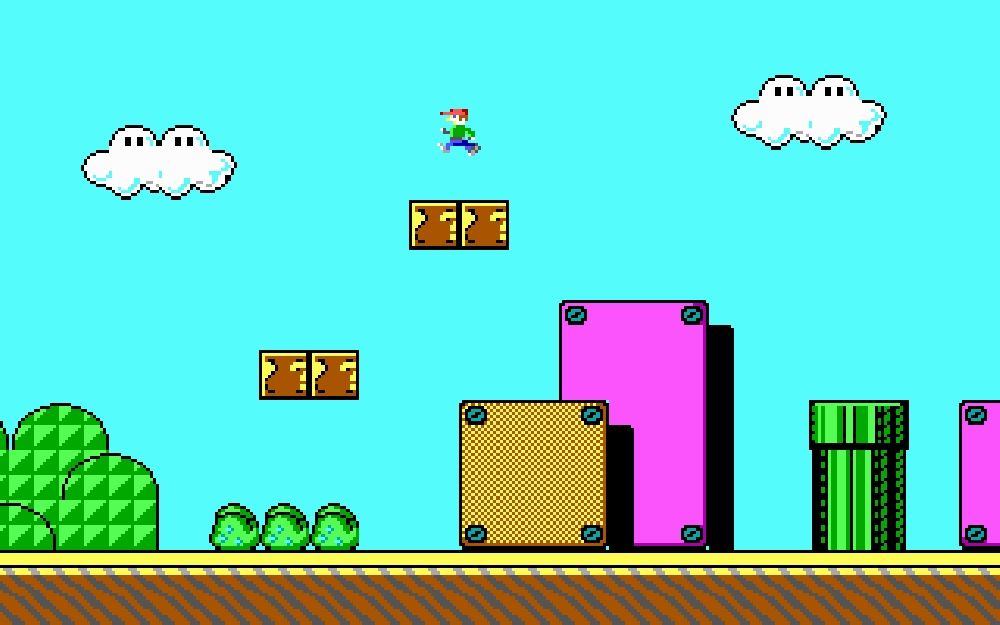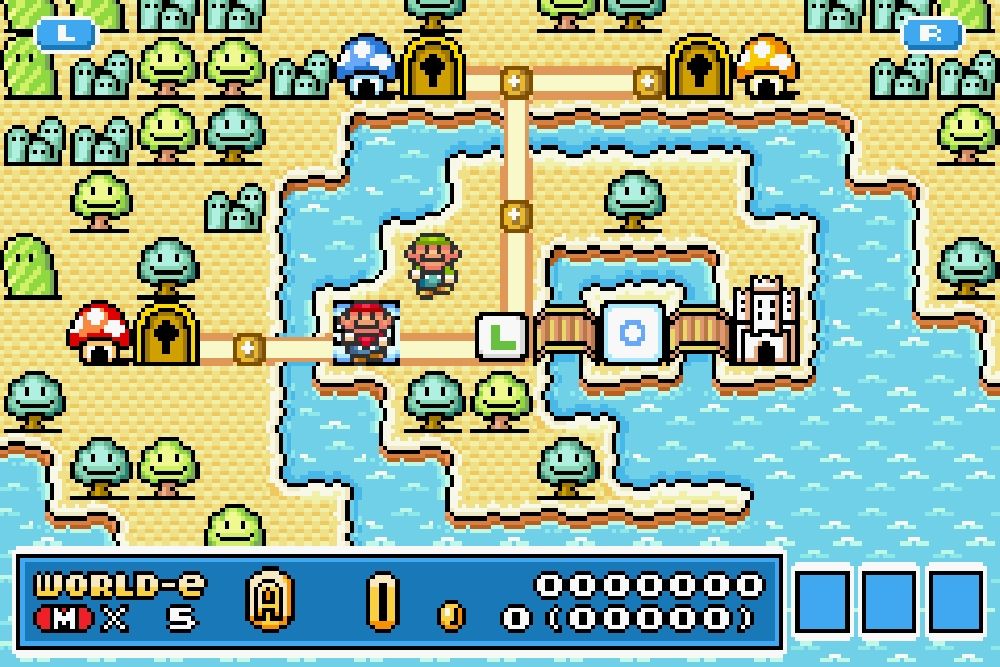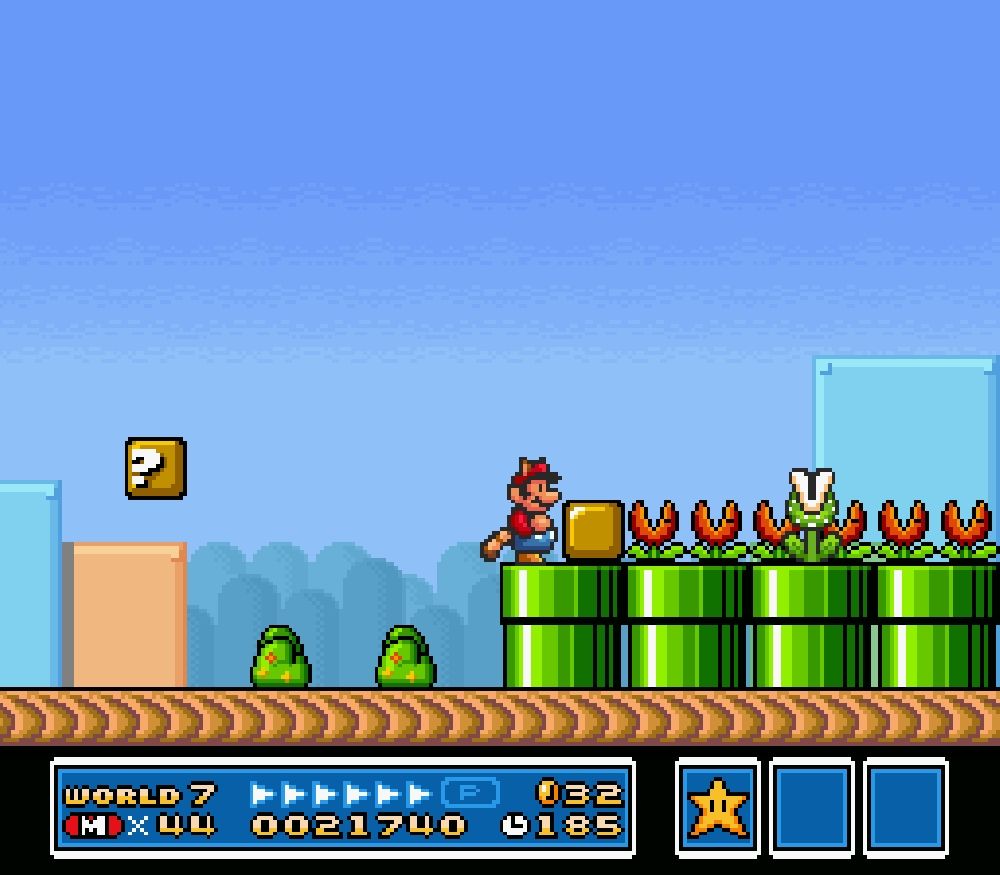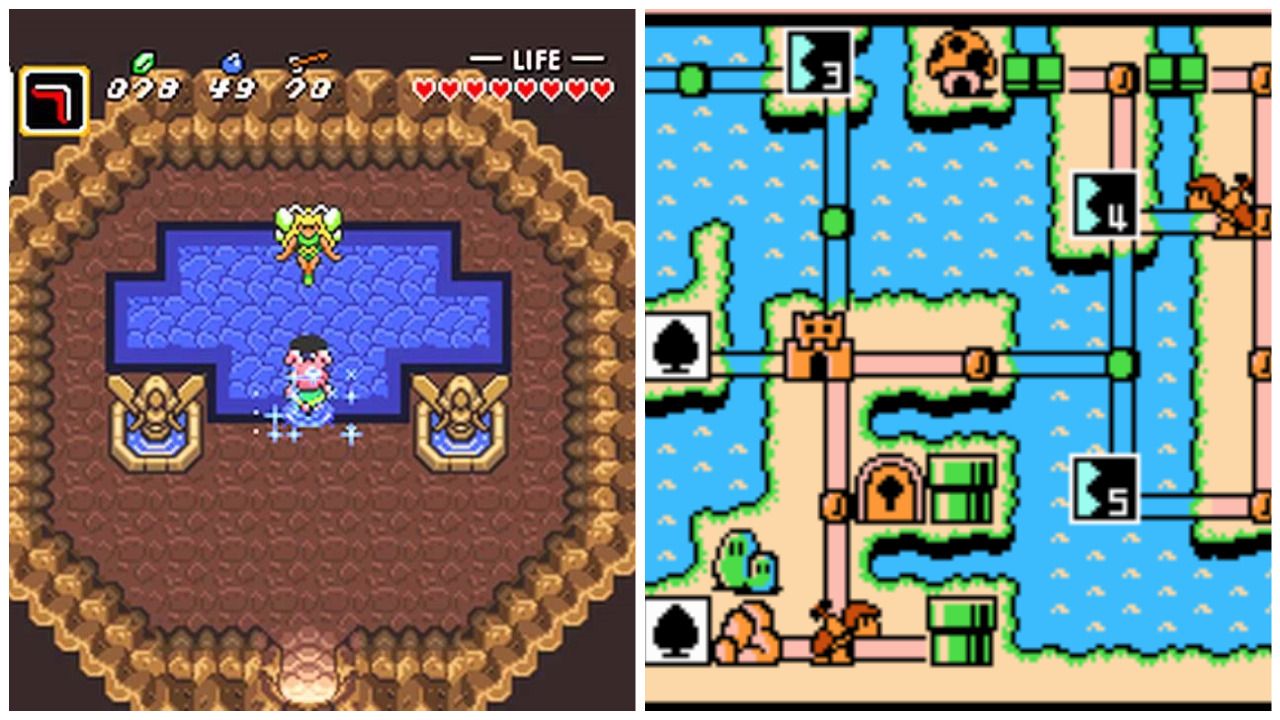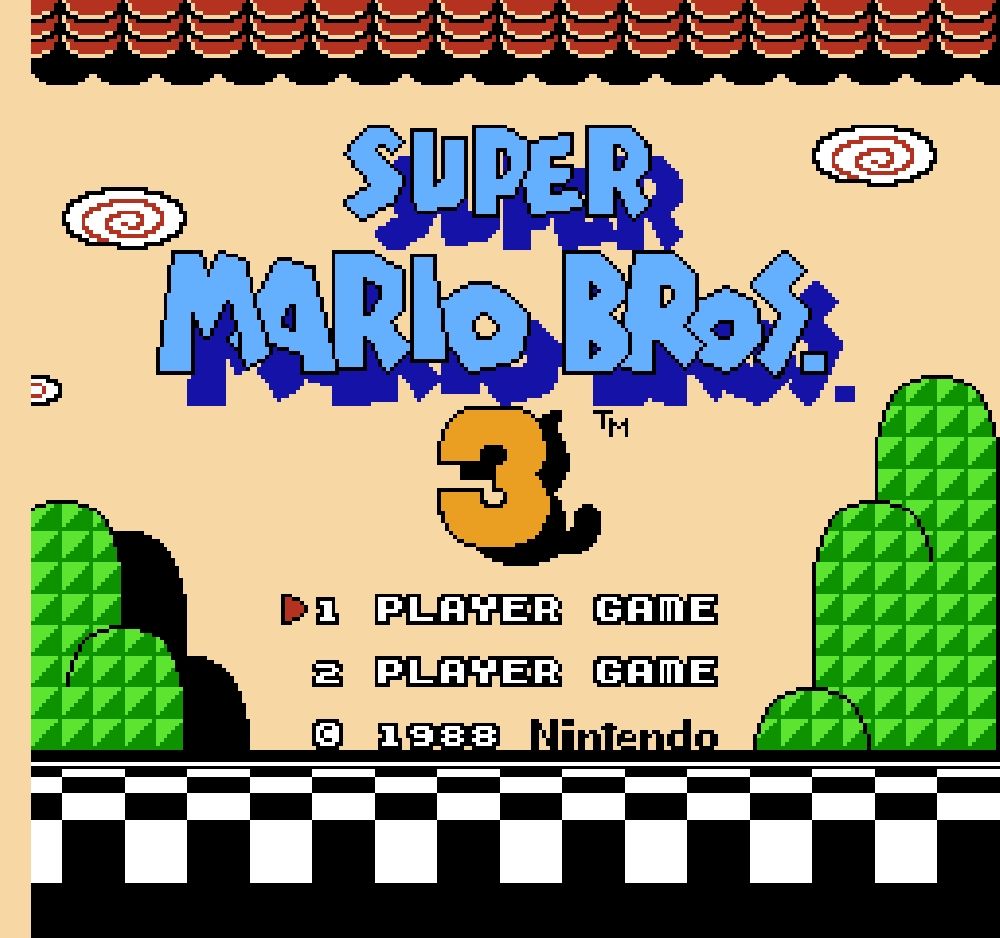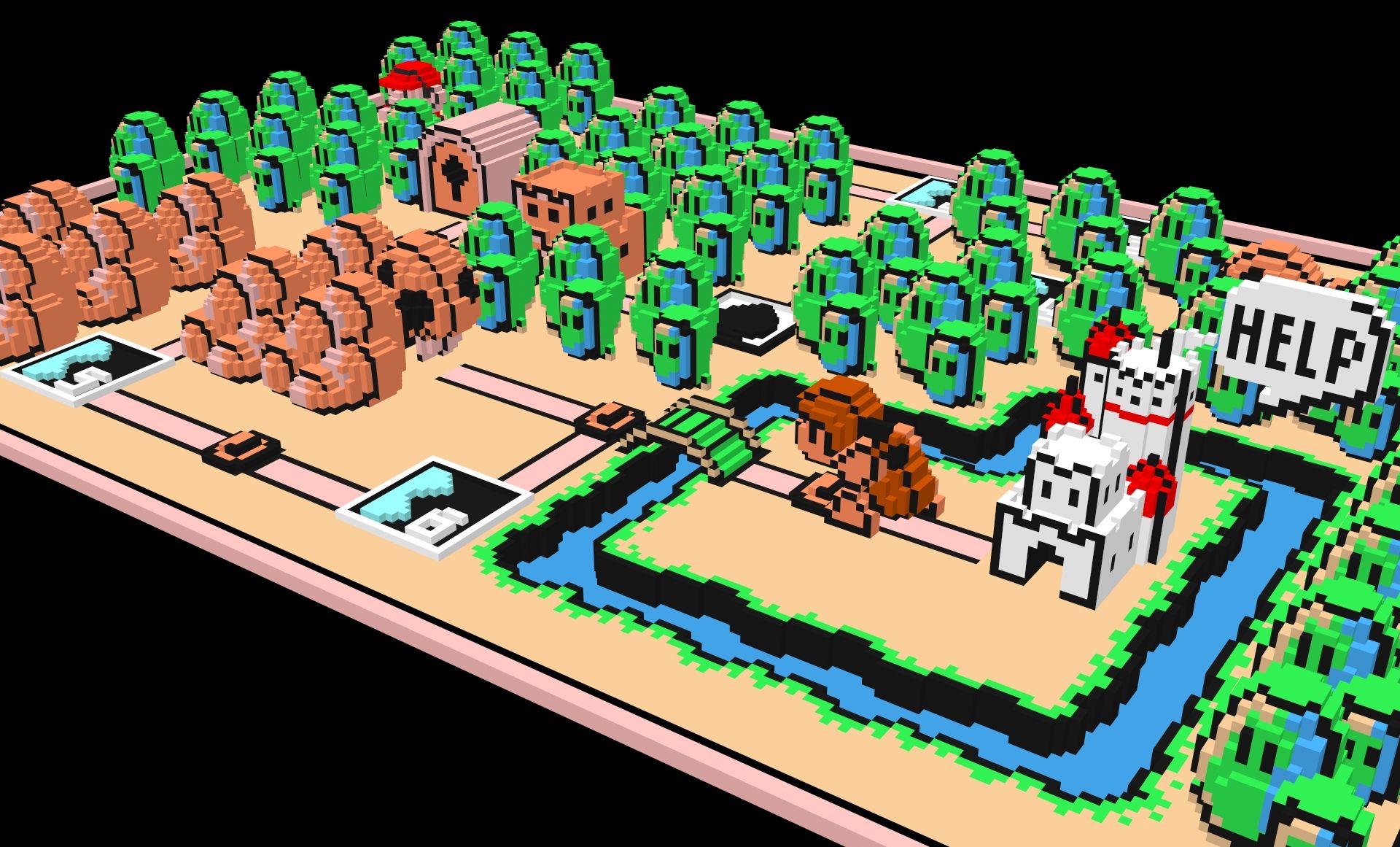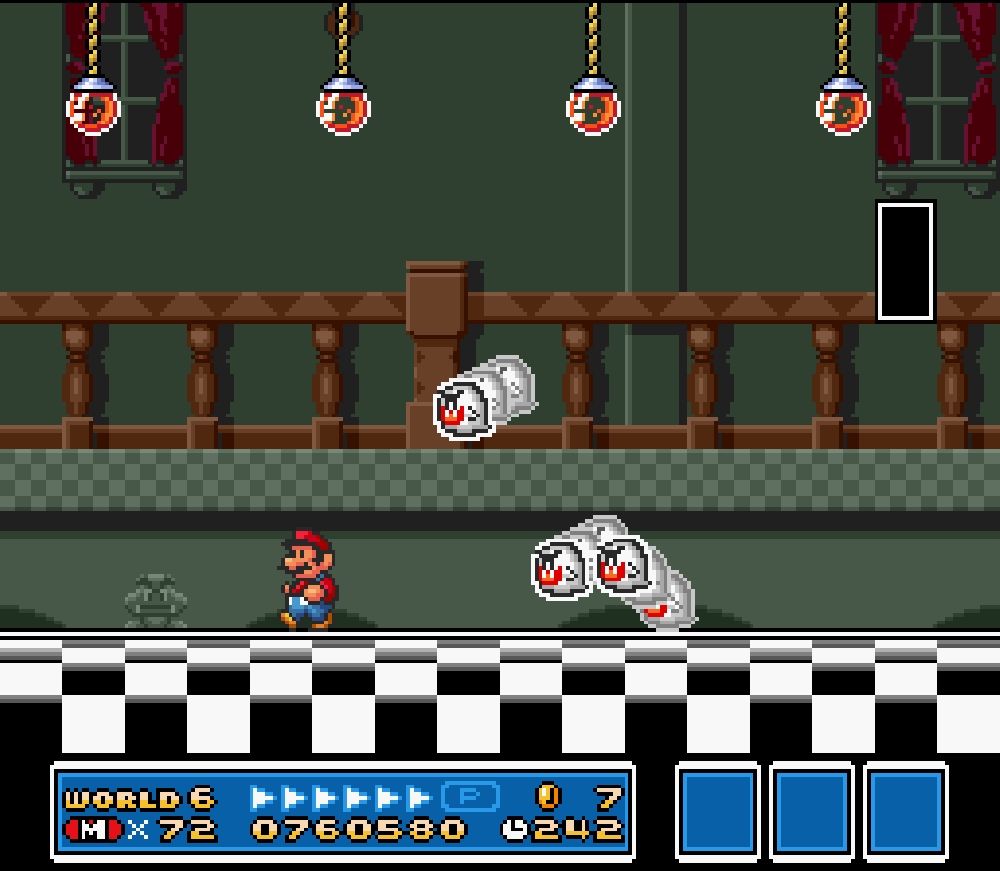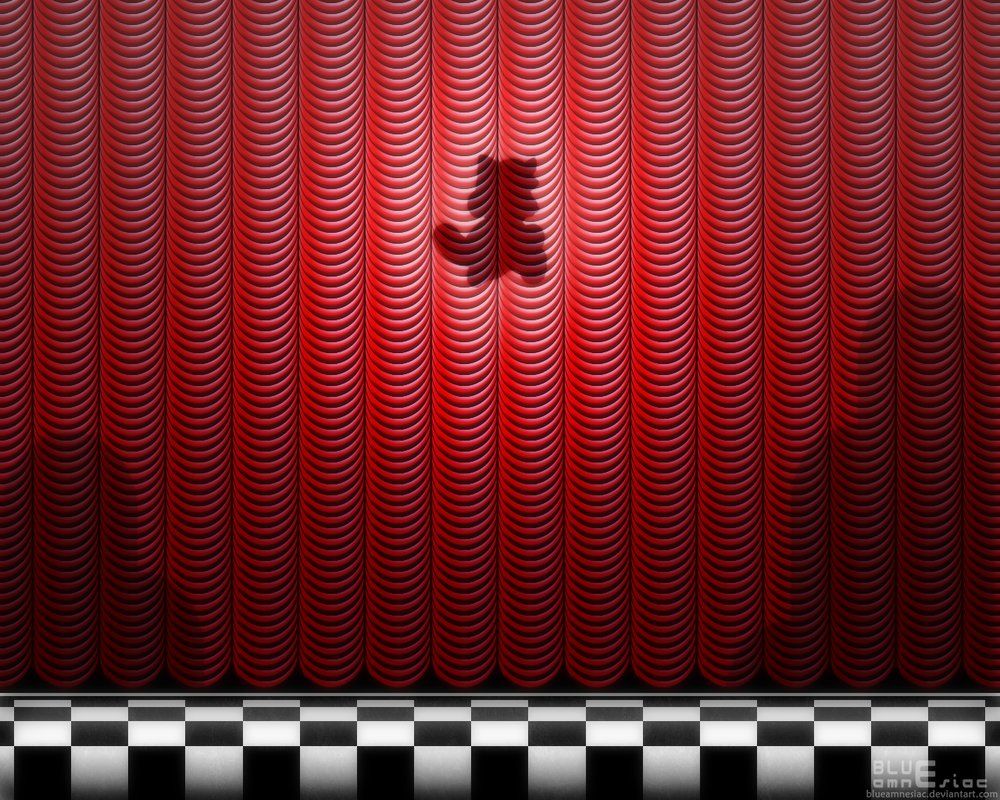Super Mario Bros. 3 was not only the last big hit of the NES era, it was also one of the best games released on the system, if not the absolute greatest. More than that, it is one of the few classics of the 8-bit era that can still be enjoyed without a disclaimer. The gameplay is timeless, the sprites are big enough to be distinctive and clean, and the challenging nature of its levels can compare favorably with any platformer from recent history. Not only did this game sell 17 million copies upon release, but it also sold an additional 3 million copies on Game Boy Advance and another million on the Virtual Console. These ports did not change the gameplay in any way; the game stood the test of time on its own.
Nearly thirty years after its initial Japanese release, one would think that Super Mario Bros. 3 no longer has any secrets, but the game’s history is so rich that every interview and retrospective brings up new information. To celebrate this masterpiece, we took a trip down memory lane to unearth fifteen crazy facts about Nintendo's side-scrolling classic. They will make you realize not only how much work went into a simple cartridge, but also how influential this title really was in the end.
15 Westerners Only Played The Easy Version
Just like the original Super Mario Bros. 2 (also known as The Lost Levels) was deemed too difficult for North America and Europe, so was Super Mario Bros. 3. However, instead of creating a completely different game this time around, Nintendo simply tweaked the difficulty of a few levels and some of the gameplay mechanics.
The most notable of these changes is the progression of Mario’s power-ups. In Japan, if Mario is hit, he will revert to regular, tiny Mario no matter which power-up he was using. In the English version, a powered-up Mario will first revert to Super Mario, and then to the regular version, effectively granting Western players an extra chance at making it through a level.
14 Mario Could Have Been A Majestic Centaur
Super Mario Bros. 3 blew my mind as a kid because Mario had so many power-ups available when compared to his previous adventures. He could become a raccoon! And a frog! And a Hammer Brother! He could even ride a shoe! If it had been up to the development team, there would have been many more costumes available, but some had to be cut from the final product. In a “what if” which would have sent alternate universe DeviantArt in a frenzy, Mario was originally supposed to transform into a centaur, those mythical half-man, half-horse beasts. Other unspecified mythical animals were considered, but only the tanooki was kept in the final product. One thing is for sure: it couldn’t have been worse than Super Mario Maker’s “Weird Mario.”
13 Pick A Box… It Doesn’t Make A Difference
Speaking of bonus games, everybody’s favourite has to be the Toad Houses scattered around the map, where Toad himself welcomes you and asks you to pick a box. Most of the time, you end up with a mushroom or a star, but the thrill of knowing that you could get a Hammer Brother suit every once in a while made every Toad House seem like a treat.
As it turns out, it’s all a fraud designed to give you the illusion of choice. The power-ups are indeed randomized, but your fate is decided as soon as you enter the house. After that, the game simply puts the same item in all three boxes. So the next time you visit a Toad House, save some time and just open the first chest.
12 The Cartridge Exceeded The Technological Capability Of The NES
With the NES nearing the end of its run, and with the Sega Genesis on its way, Nintendo was looking for ways to make sure that its 8-bit machine did not look outdated. Therefore, a series of chips were developed over the years to continually improve the NES’ capabilities. Super Mario Bros. 3 used the MMC3 chip to great effect, which allowed the game to include better animations, diagonal scrolling, and separating the screen to add a permanent meter at the bottom. The chip is also used by Kirby’s Adventure and the last few Mega Man titles. Nintendo would revisit a similar concept in the next generation of consoles, with the Super FX chip giving the SNES the ability to process 3D graphics which would be used with Star Fox, but also with more obscure titles such as Vortex and Dirt Trax FX.
11 The Koopalings’ Physical Appearance Has A Basis In Reality
Most Nintendo fans already know that Nintendo of America named the Koopalings, and that they were given the names of famous musicians (and Morton Downey Jr, for some reason). However, not everyone knows that their physical appearance was based on that of members of Nintendo’s programming team. Shigeru Miyamoto confirmed that the characters are all made to look like someone who worked on Super Mario Bros. 3, as a way to thank them for the hard work they put in the game. The programmers themselves are not named, which is a shame, as it would have been fun to compare the Koopalings to their real life counterpart. Especially Iggy, who looks like he’s permanently on a mind-altering substance, and Morton, who looks more like a member of KISS and less like an IT type of guy.
10 There Are Two Western Versions Of The Game
We already mentioned how the Japanese version differed from the Western release, but it’s worth noting that even the West received two different releases. The main difference is the name of the game’s eight worlds, which can be seen in the ending credits. The original is slightly more creative, naming the different areas with evocative titles such as “Desert Hill,” “Ocean Side” or “Castle of Koopa.” These were all replaced in the second version with “Desert Land,” “Water Land,” “Dark Land,” and so on. The second version also corrects a grammatical error from the dialogue of a bonus game, where Toad makes the Internet’s favourite mistake of replacing a “you’re” with a “your.” Unfortunately, the mistake does not make that version any more valuable on the collector market.
9 Toad Was Not Supposed To Be The Only Host Of Bonus Games
In Super Mario Bros. 3, Toad’s only purpose is to host the various bonus games (and panic when he realizes all the kings have been transformed). Some technologically creative fans have been digging around the game’s code for a while now, and they managed to find two unused bonus games, with the difference being that Toad does not host them.
The games are functional, and the sprites and texts were completed, but they were left on the cutting room floor. These games are fronted by gigantic versions of a Koopa Troopa and a Hammer Brother. There is nothing wrong with that, but the sprites were somewhat... unsettling when compared with the otherwise cutesy depictions. The decision to let the adorable Toad handle those duties was probably the right one.
8 It’s Basically Responsible For The Existence Of Id Software
While working for Softdisk in the 90s, John Carmack and Tom Hall, two of the creators of DOOM, wanted to develop a way to allow for smooth side-scrolling on IBM computers. For their prototype, they recreated the first level of Super Mario Bros. 3, while substituting Mario with Dangerous Dave, the company’s mascot. John Romero saw the demo and suggested they finish it so it could be presented to Nintendo, as an opportunity to port the game to PC. Nintendo, of course, declined, as they were never that fond of their games appearing on other platforms. However, Carmack, Romero, and Hall kept working on their project anyway, and used the new technology to create the first Commander Keen. Softdisk suggested that they should create their own company to release the game, and the success of Commander Keen gave them enough freedom to work on other projects. Like DOOM, for example.
7 There Are 30 « Secret » Levels Which Most People Will Never Play
For the Game Boy Advance re-release of Super Mario Bros. 3, Nintendo developed 30 new official levels which would be distributed on e-Reader cards, hoping to boost the sales of their fledgling peripheral. This was a good idea in theory, but playing one of those levels not only meant buying an e-Reader, but also required a second GBA (one with the game cartridge and the other with the e-Reader) and a link cable. Furthermore, only 10 of the cards were released in North America, as the rest ended up being exclusive to Japan. The failure of the e-Reader in North America, the complicated set-up, and the rarity of those cards means that most fans will never get to play those levels. Some fan recreations exist in Super Mario Maker, but are limited by the tool’s available items.
6 Hitting A Muncher Plant With Your Tail Will Turn It Into A Block!
This fact might not sound that crazy to a lot of people, but it sure blew this writer’s mind. I have been playing Super Mario Bros. 3 religiously since I was a kid, and I like to think that I know each and every level in and out, and yet, through my hundreds of plays, I never even accidentally tried this neat little trick.
Apparently, hitting a muncher (the small black plants mostly present in worlds 5 and 7) with the raccoon tail will turn them into an unbreakable block. As far as I have seen, this trick can only be performed in World 7, and it was not carried over to the GBA port, but it is still doable in the All-Stars version. Suffice to say, my entire vision of the world has been shattered.
5 SMB3 Shares Some Music With The Legend Of Zelda Series
Most people already know that the sound of the warp whistle from Super Mario Bros. 3 is the same as the recorder from The Legend of Zelda. However, not everyone realizes that the Fairy Fountain music from A Link To The Past and its subsequent versions is almost identical to the theme from World 3.
Indeed, the theme from Water Land and are basically one and the same, but there are some differences: the tempo is slightly altered and the instrumentation is more elaborate in the latter versions, but the Fairy Fountain is basically a more mysterious, less cheery version of the original. Of course, there are many mash-ups on YouTube that illustrate this point very well. With both series sharing a composer, it’s natural that some of Koji Kondo’s pieces would transcend their original setting.
4 The Game Was Delayed For Over A Year In North America And Europe
Super Mario Bros. 3 was originally released in 1988 in Japan. However, it did not make its way out of the country until 1990. This is a difference of over a year. The localization process can explain some of this delay, but it is not the only culprit.
In 1988, the popularity of the NES and the rise of consumer electronics, in general, meant that the world was met with a shortage of ROM chips. Super Mario Bros. 3 was affected, but Zelda II was also a victim of this problem. The delay did allow for the game to appear in the movie The Wizard. While this was an incredible boost of publicity for Nintendo, subsequent viewings make it a bit more difficult to still see it as a positive.
3 The Game’s Graphics Were Originally Going To Be Completely Different
It could be argued that Super Mario Bros. 3 is one of the pinnacles of side-scrolling 2D games. However, the perspective which has come to define Mario was not the way that SMB3 was originally envisioned.
In Japan, both Super Mario Bros. and Super Mario Bros. 2 had used identical graphical style. Anxious to make the third game stand out, Takashi Tezuka wanted to switch the perspective to a top-down, isometric style. It was a risky move, and early prototypes showed that designing levels would prove problematic. Indeed, it was almost impossible to tell how high the player was jumping as he was progressing. Seeing all the difficulties associated with such a view, Shigeru Miyamoto encouraged them to scrap the idea for something a bit more familiar. In hindsight, it’s hard to argue against the final result, which gave us a masterpiece beloved by multiple generations of gamers.
2 The Chain Chomp Is Not The Only Enemy Based On A Developer’s Personal Experience
Shigeru Miyamoto has said many times that the Chain Chomp, that enemy that looks like a sentient, rabid bowling ball on a chain, was based on a bad experience he had with a neighbour’s dog as a child. But did you know that real life also crept into the design of other enemies?
The Boos, those ghosts which hide their face if you look at them, were based on the wife of developer Takashi Tezuka. During development of the game, Mr. Tezuka had to contend many times with his usually shy and sweet wife, who would apparently confront him angrily behind closed doors about his busy work schedule. We are going to guess that she did not mind this “homage,” as there are no indications online of Tezuka ever being divorced.
1 None Of It Was Real!
In an interview to promote the release of the NES Classic, Shigeru Miyamoto himself confirmed a fan theory that has been gaining steam online for a while: Super Mario Bros. 3 never happened. It was all a play put on by Mario and friends, and clues are all over the game. A curtain is raised when the game is booted. Platforms are shown hanging from the rafters. Mario exits the stage at the end of each level. And if one performs a secret trick, the hero can even travel behind the set.
Astute gamers will also remember that the ending of Super Mario Bros. 2 reveals that the entire game took place in Mario's dreams. Therefore, this is the second game in a row in the series which never really happens in the Mushroom Kingdom's reality.

